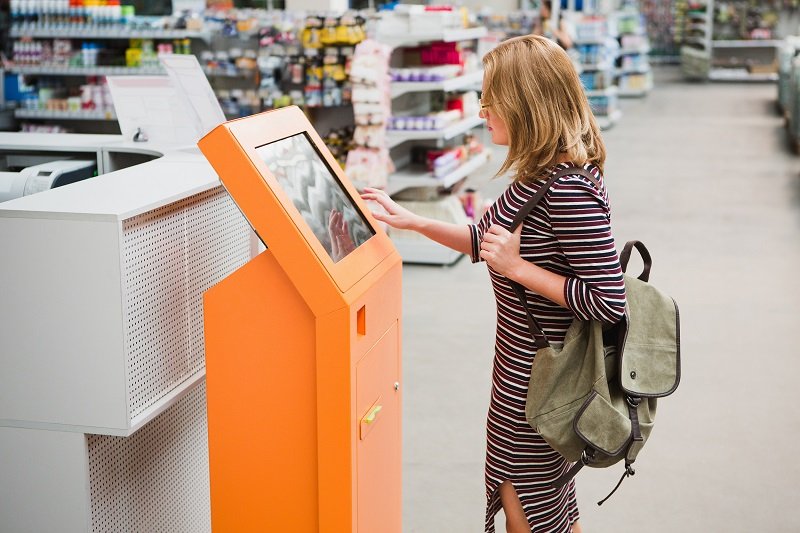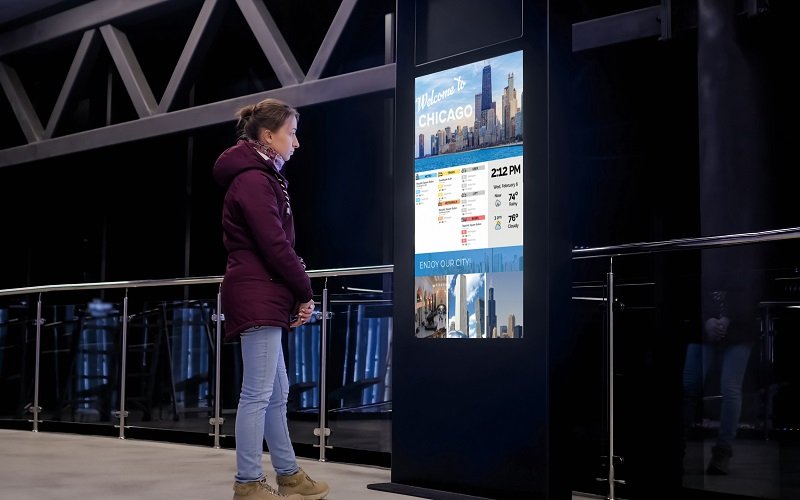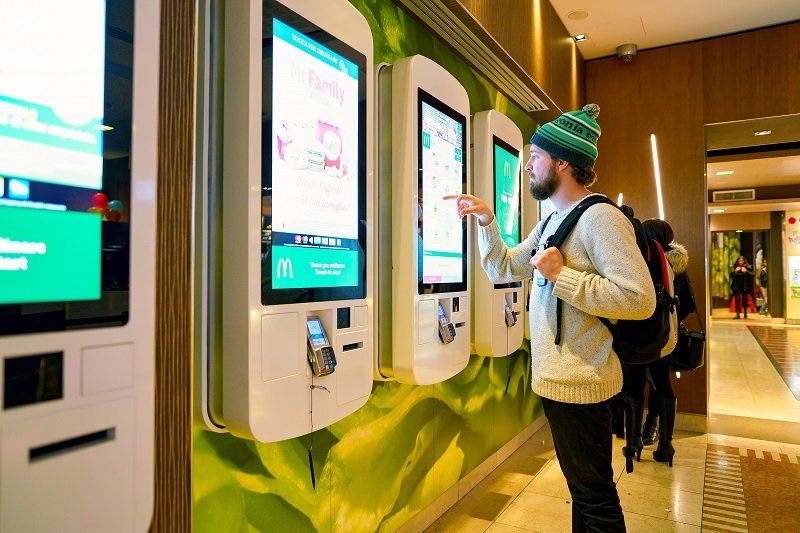The Modern Guide to Interactive Kiosks
Interactive kiosks have been a part of our world for a long time. Whether you use them to place a restaurant order or obtain a ticket, chances are you’ve come across these devices. Technology advancements – along with changes in consumer preferences – are driving more innovations than ever around this market. In fact, the global interactive kiosk market size was valued at USD 26.63 billion in 2020. Continuing the rapid growth the industry has seen over the past few years, the sector is expected to reach USD 28.34 billion in 2021.
Whether your organization is already leveraging interactive kiosks or you’re just starting to get curious about them, keep reading to learn the basics. We’ll cover what exactly interactive kiosks are and how they can benefit your company.
What are Interactive Kiosks?
Simply put, an interactive kiosk is a hardware device that uses specialized integrated software to create an intuitive interface. The goal of this system is to provide engaging information to customers, as well as allow users to conduct certain transactions. A core feature that really separates these kiosks from other forms of signage or systems is self-service. This means that users can get the information, product, or result that they want independently and without the help of others.

Forward-thinking companies are leveraging interactive kiosks as one of their most versatile solutions.
Whether at the bank or the mall, people hate standing in lines. The way that a business handles these wait times can impact their bottom line by billions. In one survey, businesses reported that they lost up to 75% of their customers due to wait times Research shows that people don’t like being bored and they want to complete necessary daily activities as quickly as possible. Interactive kiosks are great time savers, and in many cases can act as representatives in the space of employees, since they’re so customizable.
Touch-screen kiosks can help with a range of functions, including:
- Providing internet access
- Taking payments (with card or cash)
- Providing information and direction
- Placing orders
- Payment kiosk
- Buying retail goods
- Printing items
- Wayfinding
- Advertising and promotion
Automated Teller Machines (ATMs) led the market and accounted for more than 50.0% share of the global interactive kiosk revenue in 2020. Shopping malls, as bill payment, and even the manufacturing industry are all using interactive kiosks. However, there are multiple types of touch screen kiosks that can suit the needs of almost any industry.
Self-service kiosk
Machines in this category simply enable users to do tasks that might otherwise be performed by workers. Essentially they help people to skip a counter.

Popular examples are:
- Payment terminals for paying items such as credit card bills
- Point-of-Sale terminals in retail establishments
- Vending machines
- Self-ticketing machines
- Automated check-ins (such as at the airport)
- Car rental kiosks, or online queue systems such as those found in car rental locations
Information digital signage kiosk
The goal of these machines is to provide accurate and concise information. You might find these systems in museums or other exhibits, shopping centers, healthcare or government organizations, etc. They are useful anywhere that individuals might seek further information. In these instances, user experience is crucial so that individuals can actually obtain the information they’re seeking.
Digital signage
There are so many uses for digital signage, and interactive kiosks provide a way to draw attention from passersby. The signage can be passive or active, which allows users to actually interact with it. In some advanced systems, AI techniques can enable further functionality such as gathering statistical data for use in presenting information. Scanners, sensors, and cameras can also deliver personalized content to the person standing in front of the screen.
Wayfinding kiosks
For larger campuses, wayfinding in their lobbies can be critical for visitors. These kiosk solutions help with geo-location and assist people in knowing where they are and how to get where they’re going. Wayfinding kiosks are integrated with various types of maps and are generally based on 3D modeling. Some also use printers to provide extra guidance to tourists or guests.
How Would my Organization Benefit from Interactive Kiosks?
Touchscreen kiosks will help you to future-proof your organization. Tomorrow’s consumers will not only prefer but expect self-service innovations. One ZenDesk survey found that 67% of respondents would prefer to help themselves rather than speak to a company representative. Similarly, an American Express report shared that 60% of US consumers say their go-to channel for simple inquiries is a digital self-service tool.
Organizations must adapt to these changes in consumer preferences, and the ones that do will experience:
- Reduced burden on staff, and in some cases, reduced overall labor and resource costs
- The ability to reach a wider audience
- Increased consumer or patient satisfaction, which leads to increased loyalty
- The opportunity to obtain customer insights
- Shorter wait times and line reduction
- Improved user experiences
- Simplified access to information
- Higher revenues due to reduced wait times
Interactive digital kiosks and self-service kiosks result in a higher return on investment for companies who implement them (even accounting for installation costs). Driven by reduced labor costs, shorter wait times, and enhanced interactions, interactive kiosks improve your customer or patient experiences – which will keep them coming back.
Interactive Kiosks: Choosing the Right Product
There are numerous vendors who can provide out-of-the-box hardware or kiosk software solutions for creating an interactive kiosk. In many cases you can choose your own components and configure settings to create your own terminal.

On the other hand, you can work with an expert to develop a cohesive system with user experience at the forefront. For example, Mvix is able to fully customize a solution to meet the needs of any sector. You can create terminals that are perfectly tailored to your business needs and created with your users in mind.
The main things to think about are:
- Concept Development – What output are you looking for? Here is where you’ll investigate your target audience and the functionality they need.
- Visual Interface Design – The interface is the crucial bridge between your company and the user. A poor user experience will lead to failure, so it’s important to engage with real people when designing the interface.
- Hardware – Use the functionality you determined in previous stages to narrow hardware choices.
- Software – The correct software for you might include features like internet, security, touch-screen support, and more. An experienced partner can help you choose the right software.
If you plan to take advantage of the next wave of consumer preferences, you need to understand interactive kiosk solutions. For more tips on this type of signage or to experience a demo of our award-winning software, reach out to us.




